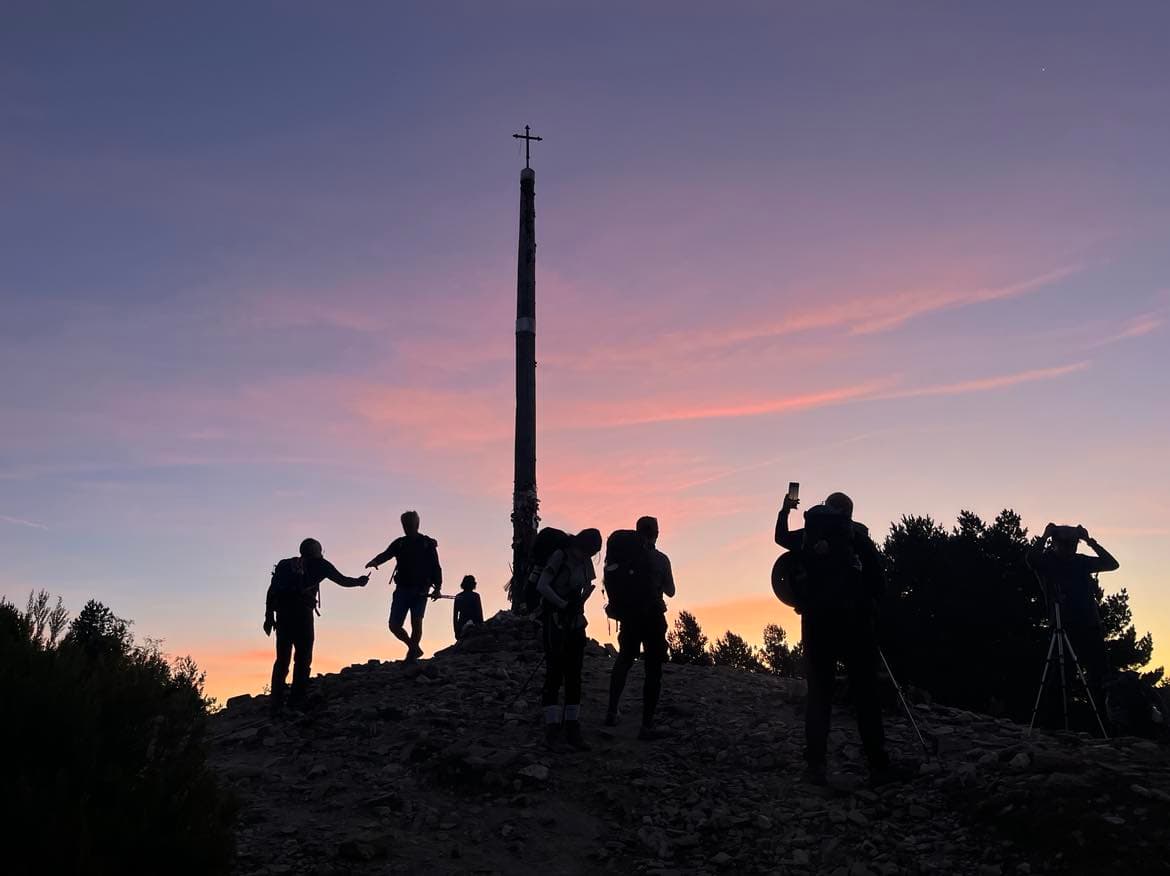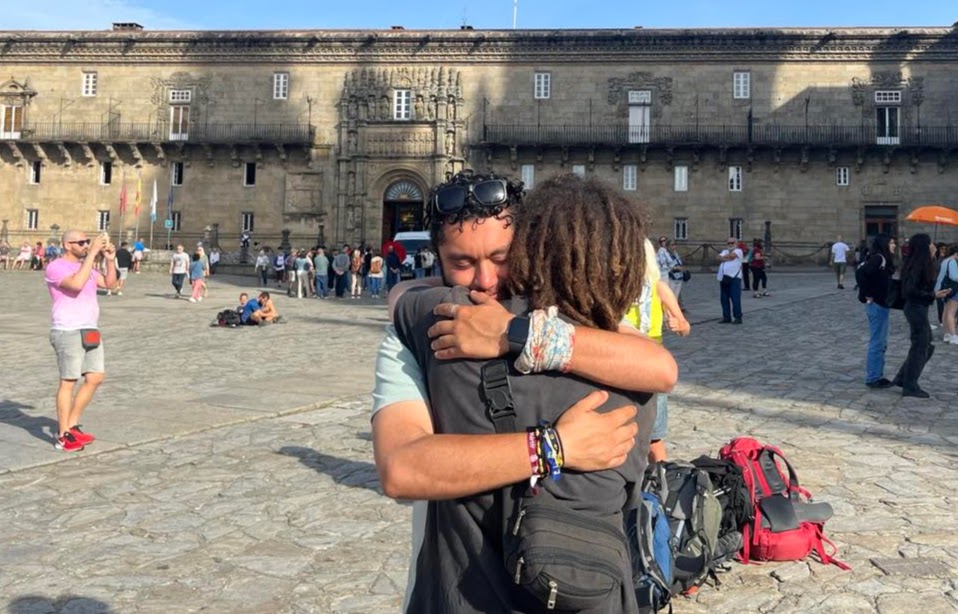The Camino Diaries, Week Four: A Bittersweet End of the Road
I had been looking forward to some spiritual revelation being magically granted to me by walking 500 miles across northern Spain, yet it seems I am left with nothing but callouses.

A few days before the final week of the Camino de Santiago, the ancient pilgrimage across Spain to the final resting place of St. James in Santiago de Compostela, sits the Cruz de Ferro. It’s a large iron cross between the towns of Foncebadon and Manjarin. At the base of the cross sit hundreds of small stones, ribbons, and photos of loved ones.
Legend has it that when the Cathedral of Santiago was being built, pilgrims were expected to bring a stone to contribute to the construction. The modern tradition is for pilgrims who ply the route to carry a stone, or another small symbolic object, throughout their walk and leave it under the cross to “let go.”
I arrive at the Cruz de Ferro during a brisk rosy sunrise, carrying a small pebble I had found outside Saint-Jean-Pied-de-Port, the French village that marks the beginning of the Ruta Frances, on my first morning on the Camino. I kept it zipped in the pocket of my everyday pants throughout the journey, occasionally reaching down to make sure it hadn’t fallen out.
Kneeling down to place it beneath the cross, I am surrounded by a few other pilgrims, many of them praying quietly. The solemn silence is punctuated by a loud drone whizzing overhead. It remains there the entire 20 minutes. Apparently, even moments of introspection need to be recorded by some pilgrims for an Instagram reel.

My final week on the Camino is different from the three that preceded it. Floods of newcomers join the Camino at Sarria to walk the last 100 kilometers and get their Compostela, the certificate awarded to pilgrims by the church in Santiago. Tour groups pile into towns on buses, the trail becomes congested, and people carry stereos blasting music as they walk. The trail is suddenly much less peaceful. Before Sarria, I recognized most people on the trail from one day to the next. Now, it feels like dozens of strangers have barged into my house.
Not only is there a shift in atmosphere, but the final week brings plagues. Five days from Santiago, I manage to spend a night in a nest of bed bugs at one of the cheap pensions, known as albergues, that line the route. I spend half a morning running everything I own through a dryer over and over and worrying about my bunkmates.
Two days later, the dreaded stomach bug that I have been hearing about since Saint Jean finally catches up to me. I am up vomiting much of one night, an affliction that continues throughout the walk on the following day. Utterly spent from this, I walk the final few days in delirium, barely eating and certainly not in the reflective mood of some of my peers.
There is a noticeable buildup of anticipation among us pilgrims during that last week. We sheepishly eat dinner in silence, not wanting to acknowledge the elephant in the room — that many of us would likely never see each other again. The countless walking hours spent deep in conversation, the nights spent wine-drunk and storytelling until the hospitaleros forced us to bed — all of it is coming to an abrupt end in the next few days. It reminds me of the goodbyes we used to make at summer sleepaway camp. I feel like a child again.
Throughout my Camino, there was an 84-year-old Japanese man who claimed to have walked it more than ten times. We would often see him strolling through the streets of the small villages smiling to himself and taking notes in a small journal. One day, he offered some advice: forget any expectations you have about what happens at the end. Some pilgrims, he said, weep with joy. Others from exhaustion or relief. Some feel nothing. During his own arrivals, he said, he sometimes felt a jarring emptiness as he approached the cathedral.

The group I had latched onto early in the Camino and stuck with much of the route — two young men, one from Israel and another from Mexico, and two middle-aged British sisters we took to calling “The Aunties” — walk into Santiago hand in hand. A musician is playing bagpipes, and newly arrived pilgrims are either cheering or weeping.
It is a beautiful moment. We hug, congratulate each other, and take dozens of pictures to send to our families. After that, an awkward moment. “What now?” we ask ourselves. Surely there must be more steps to take. I had been looking forward to some spiritual revelation magically granted to me by walking 500 miles across northern Spain, yet it seems I am left with nothing but calluses.
The goodbye is bittersweet. I walk to the train station alone in the pouring rain, recalling walking out of Pamplona weeks earlier also in the pouring rain, my boots similarly filled with puddles. I was in possibly the worst mood of my entire month — terrified of my blisters getting infected by the rainwater seeping through my socks, my pants soaked and sticking to my legs, my eyelashes dripping water into my eyes.
Two friends walking in front of me were leaping into the puddles, coating each other in mud and laughing over the thunder like two small children. Despite my lousy demeanor and the downpour that day, despite the aches and exhaustion, there was joy. Now, on my way out of Santiago, there is only emptiness.
The second week of the walk, an albergue owner insisted to me that the gifts of the Camino only reveal themselves to you a month after one finishes. I guess we’ll see. For now, though, the gifts seem to all be in those miles — small, brief moments of humanity taking solace in one of the most basic of movements: walking.

